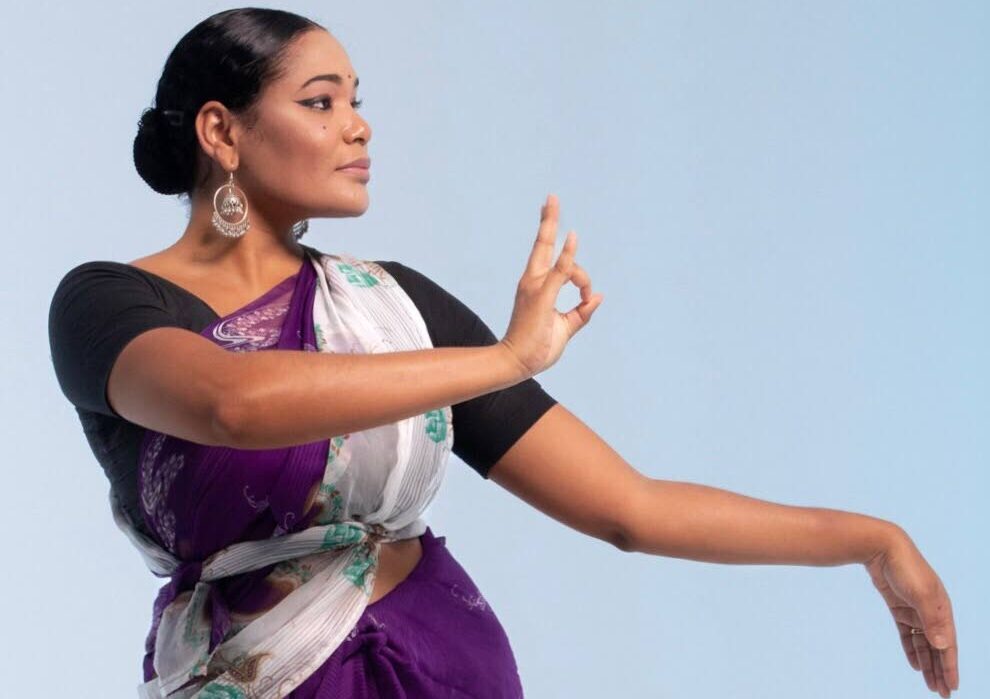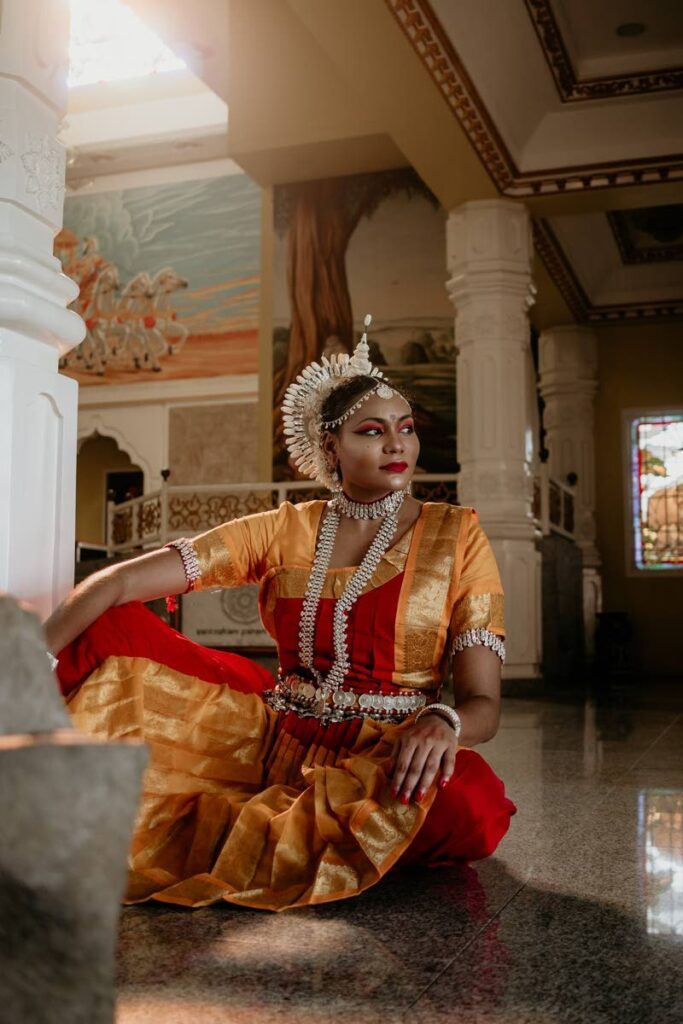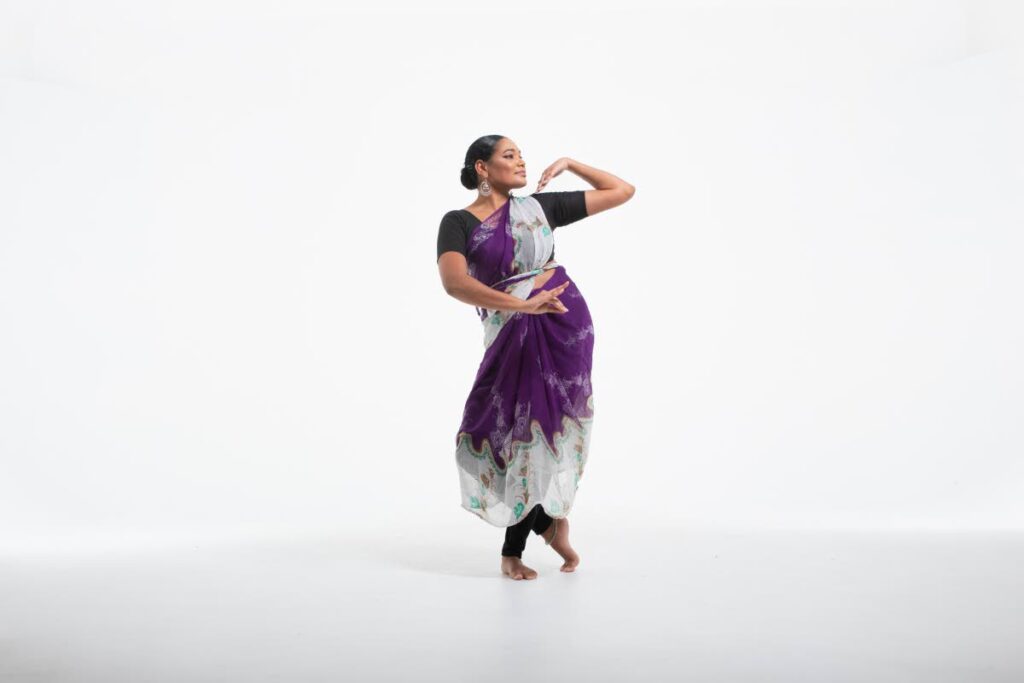Indian dance researcher wins Global South scholarship

INDIAN classical Odissi dance artiste Sade Budhlall is the first person from Trinidad and Tobago and the Caribbean to win a Global South Scholarship from the London Contemporary Dance School. She will be doing a masters in dance: participation, communities and activism.
The scholarship fully covers the cost of her study at the UK school, valued at £21,300. It is awarded to students who live and work in one of the countries of the Global South, either permanently or regularly, and intend to complete at least part of their MA course living and working in that country.
WMN spoke to Budhlall in a phone interview on August 14.
Budhlall, 35, has been practising Indian classical dance since she was in secondary school at St Augustine Senior Secondary School. She stopped while doing A-Levels, and then while doing her psychology degree at the College of Science, Technology and Applied Arts of Trinidad and Tobago (COSTAATrinidad and Tobago) , she was drawn to Odissi classical dance, one of the eight classical dance forms of India.
She said Odissi dance is characterised by its fluid, graceful movements, intricate footwork, and expressive facial gestures, often used to depict stories from Hindu mythology. The dance form is deeply spiritual and was traditionally performed in temples as a form of devotion.
“At age 25, I started learning with the Nrityanjali Theatre in Trinidad and Tobago under artistic director Guru Mondira Balkaransingh I’ve been a member and performed in their shows for the last 10-11 years. Over the last two years, I felt I needed to deepen my understanding of the art form and refine my technique and so I reached out to Guru Sharon Lowen in India. She is a world-renowned expert in Odissi.”

Budhlall said she wanted to explore how she could relate Odissi to her life and experience in Trinidad and Tobago.
“Odissi originated from Odisha, a state in India, and while it’s a dance form I’ve fallen in love with, and it’s deeply meaningful to me, it’s not part of my cultural heritage. It didn’t come with my ancestors, it didn’t come with the indentured labourers that came to Trinidad and Tobago, and so over the years, it’s made me reflect on my own identity as a Trinbagonian.
“I also feel that Indian classical dance, Odissi included, tends to be performed in Trinidad and Tobago within Indo/Hindu spaces, and I want to challenge that norm by making it much more accessible, contemporary and inclusive. There are such rich diverse narratives in the literature, in the text, and I feel like by integrating Trinbagonian ancestral rituals and cultural traditions, I could create a fusion that honours both the original form and my own cultural background. I feel like that inspiration will help me explore and express my identity more fully while also bringing something new and culturally relevant to the world of Odissi.”
Budhlall said her research will focus in part on developing a method of teaching which integrates the exploration of national identity through Trinbagonian ancestral rituals, inter-cultural celebrations, and traditions.
“I feel if I want to use dance for social change, if I want to use Odissi to speak to the contemporary socio-political issues of society in Trinidad and Tobago, then my language of dance has to be accessible, it has to be a language people can relate to and I understand, and I feel that’s not really happening in the Indian classical dance space, which happens in silos most often.
“Trinidad and Tobago’s culture is too rich, we have so much to offer, and I feel what I’m doing has to do with national identity, cultural pride, what it is to be a Trinbagonian Indian classical dancer.”
One example of how Budhlall has begun to incorporate Trinidad and Tobago culture into her classical dance practice is how she thinks of pranam, a ritual done at the beginning and end of dance practice and performance. She said the ritual consists of touching the head, touching the ground and asking permission from Mother Earth to stamp on her, and giving thanks to God, the guru, and the audience.

“I’ve been doing that for 11 years and never once did I really deeply think about whose land is this that I’m standing on, who was here before me. I’ve never thought about the First People that were here, the Amerindians that were here, I’ve never thought about honouring the African slaves who were here, whose blood, sweat and tears literally built this country we call Trinidad and Tobago, and the indentured labours who came here, who also lived under similar experiences of oppression. So now I’m trying to redefine how can I do this ritual to make it within our context?”
She said at a recent Zante Children’s Camp workshop, she decided to do something different in terms of how she taught dance.
“I wanted to do something that the children could recognise and understand and be proud of in terms of their heritage, so we did Indian classical dance movements to Carnival characters, like how a moko jumbie would move as an Odissi dancer, how a blue devil would move, and they were so amazed and excited.
“I feel like when we break down dance movements like that and we make them accessible, a beautiful thing is we tend to realise that the root of these movements are so similar. African dances, Indian dances, when you break them down to the core, they’re so similar and I think a part of why I want to do inter-cultural traditions and mention dance is because it tends to focus on the similarities we have as opposed to the differences, which makes it easier for people to enjoy each other’s cultures and come together and have this union and fusion of celebration of movement.”
She said she has incorporated poetry from Trinidad and Tobago in her dances, and recently used African drummers as part of a performance. She has used the practices of Kalinda and Gatka as models of restoration, activism, community bonding, and resistance in dance training.
Another aspect of her research will involve integrating phenomenology, understanding the mind and body relationship within the dancer and their audience.

“In the Indian classical training space, I’ve certainly found we tend to do a lot of work on repetition for perfection and performance. In all my years of training, when I was in a dance studio or a dance class, I never once asked myself how I feel while I’m doing these movements, like how does my body feel? Where am I holding tension in my body? What am I bringing to dance class, what are the stresses and frustrations that I’m bringing in my body? So these are things I feel have to change in terms of how we train dancers, because it helps dancers and teachers to connect to their own lived experiences, and it makes the movement a lot more intentional and meaningful.”
She also wants to focus on embodied activism and leadership development.
“Embodied activism brings awareness to the body as a site of resistance, as a tool for social change. Leadership development is about building the capacities of dancers to challenge harmful social norms, advocate for justice and equity, and fostering a sense of responsibility toward their communities. Bringing together all of these elements creates a holistic approach to dance education in Trinidad and Tobago that is both transformative and impactful.”
Budhlall said she applied for that particular Masters programme because it combined her two career paths: dance and humanitarian work. While she was at COSTAAT, she had begun volunteering to fill her time and has consistently worked in humanitarian spaces since then. She currently sits on the board of the Red Cross Trinidad and Tobago and has also worked as a freelance humanitarian consultant for the last 11 years.
“My teacher in India is an academic and a Fulbright scholar. I saw how she applied academia to her work and I was really interested in doing something similar, but I couldn’t find a degree programme I felt very aligned to. I’ve done a lot of work in humanitarian consulting from disaster response to policy development and I was really looking for a way to merge the two but I didn’t think it was possible. I was intrigued by this particular programme because it essentially uses dance as a tool for social change, and I just thought, wow, my two careers could actually merge together, this is exactly what I wanted to do.”
Budhlall said there was a prevailing sentiment that people who go into academia become distanced from the communities they are studying, but the programme she was enrolling in was specifically designed to avoid this.
“What I love about this degree is that it’s a Masters in participation, communities and activism. A huge component of this is being deeply embedded in your own community, creating based on your own lived experience and the lived experience of your community members. It’s a strong focus on community engagement, and the exploration of really diverse cultural narratives.
“Yes you’re creating and conducting research and there’s a strong academic component to what you’re doing with your academic practice, but everything you’re doing is based on cultural relativism, based on using the perspective of your embedded community.”
Budhlall said she was looking forward to starting the degree in September, but was experiencing some nervousness.
“As I prepare for school, I feel like it’s a profound honour, but also because I’m the first Trinbagonian and the first Caribbean native in this particular scholarship programme , I also feel a sense of responsibility, because I feel like the recognition is not only of my individual work, but also of the potential that not just what Caribbean culture holds in terms of the global arts landscape but also Indian classical dance, what am I going to bring to the art form?
“On a brighter note, I do feel like I’m bringing to the London Contemporary Dance School, a really unique perspective that’s rooted into the culture of what Trinidad and Tobago is, because I want my work to really be informed by the traditions of our music and our dance, even our spiritual practices and traditions, and I really want to integrate these elements into broader discourse of dance and activism. For that I’m extremely excited.”

Comments
"Indian dance researcher wins Global South scholarship"